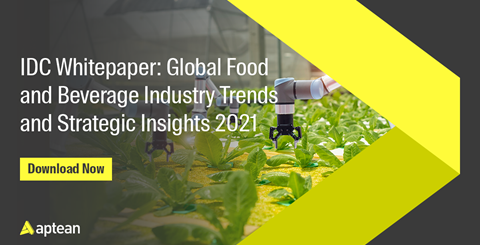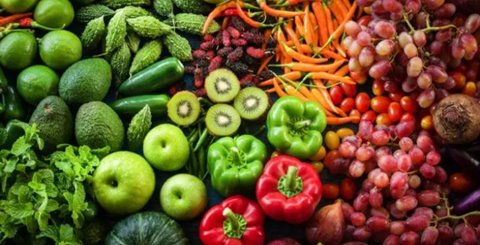How the better use of data can help fresh produce businesses grow
The way in which fresh produce businesses keep records of their operations has changed relatively little over the years. The hands-on nature of farming means they tend to favour more rudimentary systems of recording data - in practice, this means pen and paper, or basic electronic input.
While every fresh produce business needs to keep consistent records, primarily for compliance purposes, actually doing so can be a chore. But worse than this, the information that is collected often ends up being disregarded or underused after its initial purpose has been fulfilled. This is a waste of critical insights, and actively costs businesses potential revenue.
Record-keeping in this form represents an inefficient use of resources and a missed profit opportunity; clearly, more needs to be done to utilise what is often a wealth of data. Here, we explore how this data can be used to add value to a business and the role technology can play in providing solutions.
The benefits of more accessible data
Fresh produce businesses traditionally take records in a way that prioritises speed and practicality on the job. Less thought is given to how the information is stored and retrieved in the future. Being able to obtain a range of archived data quickly is important for business analysis.
Paper datasheets are quick, cheap and convenient - from a data-recording perspective they can’t be beaten for usability. However, when it comes to filing and organising, inputting and sharing, paper-based records take up too much physical space, require time to organise and have poor searchability.
Even if the data is stored electronically on a business’ computer network, the latter two of these problems still exist. This isn’t to mention duplication of results and errors resulting from manual input when transferring between platforms. As time goes on, we can see how the more basic methods of record-keeping actually lead to more problems accumulating and more time spent resolving them.
So how can we correct this without making day-to-day tasks more difficult? The right balance of user-friendly hardware and powerful software is essential. Simple data-entry hardware - ideally durable and glove-friendly mobile devices - can replicate simple form based input. These devices can be used on the production floor or in farm and warehouse vehicles, or assigned to individual personnel.
The right system to store this information and the right software to organise it can make a world of difference to ease of access. Data only needs to be logged once, and can be automatically presented in whatever configuration is appropriate for the business, resulting in a single centralised version of the truth.
Looking to the future
It can be easy for fresh produce businesses to treat record-keeping as a means to an end, be it for regulatory or accounting purposes. We’ve explored how the effective use of technology can streamline these processes to save valuable time and resources, but the biggest benefits to be gained are by using the information to analyse and predict performance.
The volume of data collected through regular recording is significant enough to provide powerful insights. Operational records are frequently underused and under-appreciated resources that can help businesses take a proactive approach to growth. Data-presentation or business analytics software can help focus on the pertinent information and understand improvements that can be made.
There are generally two ways to utilise records in this way:
- Identify and solve issues which become apparent through analysis. For instance, by assessing profit margins on different crops or production lines, businesses can reallocate money and resources in a way that improves return on investment. This can ultimately have a big impact on how money is spent and what problems are prioritised.
- Create accurate forecasts. Established businesses will have a significant archive of data which, with the help of modelling software, can be used to make accurate predictions. For example, comparing current soil make-up and weather conditions with previous occasions when they have been similar can allow a business to predict yields and produce quality. Or analysing seasonal demand and supply patterns can help predict and plan production requirements. This again is vital for estimating future revenue streams and allocating resources and spending accordingly.
Compliance
Compliance in the fresh produce sector is becoming an increasingly complex undertaking, especially considering the level of traceability now required.
Fresh produce businesses need to demonstrate better than ever that they have a handle on every aspect of their operations to comply with the various regulations surrounding crop quality, soil quality, sustainability, pesticide risk, disease management, livestock management and much more besides.
As the industry demands higher and higher standards, businesses need to ensure they are ready to prove they comply at all times without allowing the process to eat into their time, resources and profit.
Of course, regular record-keeping is paramount but that alone is no longer enough to ensure accountability. This speaks largely to the issues we discussed around the accessibility of information - just because the data is there does not mean that it’s readily available when required.
Nor does it mean that it’s in the right form. The correct interpretation and presentation of operational records is what proves compliance, not the raw numbers. This is where technology, particularly ERP systems which can pull data from all areas of the business in real time, is so useful.
Integrated software can automatically present data in the form of reports specifically designed for various regulatory purposes. This removes the need to conduct manual audits when an inspection or certification is due, streamlining working processes and allowing staff more time to focus on growing the business.
While keeping and organising operational records are necessary everyday tasks, they also represent an opportunity to harness untapped potential within a fresh produce business. The right combination of integrated technologies can help extract additional value from the records. To truly take advantage of the data at your disposal, a joined-up approach is required. This means breaking down silos, bringing all technology under one interface and all information into one common database.
 Nederlands
Nederlands English
English



